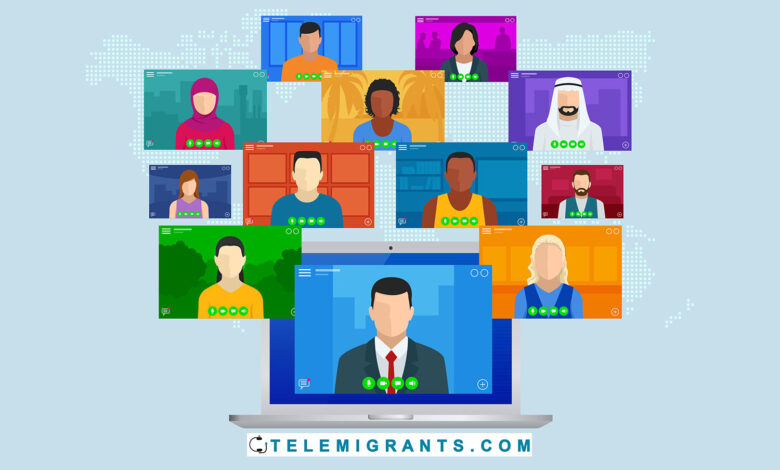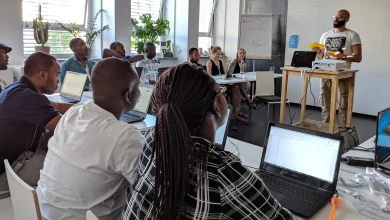Teleworking Opportunities and the Future of Work
The New 9-5 Work Life

Two years into the outbreak of COVID-19 pandemic, the World of work has witnessed a significant shift which is becoming an acceptable culture. Today, teleworking and remote work contracts are commonplace even in developing countries. Though they were initially into the old work life of resuming from a workspace separate from home. This previous inertia could be attributed to the sticky work cultures as well as a lack of interest from employers in investing in the technology and management practices necessary to operate a tele-workforce
Working from a designated workspace entails having to commute daily usually from Mondays to Friday under a 9 to 5 contract. This means a situation where a worker has to resume everyday between 9am and work until 5pm before closing for the day. This is also called an on-site work contract. It is a time-based contract that emphasizes the completion of work on the account of time spent. Whereas teleworking or remote work allow workers to perform from anywhere other than a designated office space. In most cases remote work is synonymous with working from home as more people feel better staying at home to work rather than any arranged workspace other than their home.
REMOTE WORK AND THE FUTURE OF WORK
Without doubt, the teleworking or remote work pattern is already a culture in developed countries of America and Europe. For instance, up to half of American workers are currently working from home, more than double the fraction who worked from home temporarily between 2017 and 2018 according to the American Bureau of Labor Statistics. Yet we must emphasize that some jobs simply can’t be done at home. Though many jobs are getting on remotely that were previously difficult. This is further accelerated by the development of various remote work technologies today.
The future of work has been argued by many experts to be less of a workspace (on-site) contract to more of remote (teleworking) contract. Yes one can say that the future of work will be a hybrid work life but it will be dominated by the remote side of the divide. A hybrid work pattern is a combination of both on-site and remote work contracts where people will choose either to work from home or from a designated workspace. However, the argument is that there would be more of the remote work option for future workers as we see the signs today.
The underlying reasons are because of the inherent advantages of remote work or teleworking opportunities. For many workers today, telework entails greater time and place flexibility, enhanced job autonomy, improved work-life balance and reduced commuting time.
Equally, telework is also perceived to improve employment opportunities for persons with disabilities, older workers, refugees, women with care responsibilities, people living in rural or peripheral areas. This is opposed to the formal 9 to 5 work contract that takes into consideration many fundamental legal status and work permits for individuals to participate. Kindly check our article on Compliance Issues for Telemigrants for more insight.
In addition, remote work opportunities have been mentioned as a sustainable means for tackling the global talent gap or glitch. As it provides the possibility for talents in developing countries of Africa, Asia and South America to join the rest of the developed world of America, Europe and Australisia. This is the future of work; a future where locations or citizenship status wouldn’t be a hindrance to accessing opportunities.
A future of global citizenship. Such a future will not be subjected to the old 9 to 5 work contract. Rather, it will be more skill-based and task-based. It will de-emphasis the old business hours of Monday to Friday that represents a workweek of five to eight-hour work daily comprising 40 hours weekly.
Workers of the future will be judged by work output more than time spent. Time will be relative to the agreed timeline to deliver the task which workers will often want to beat in order to continue accepting other tasks. Truth is that today, the focus for many organizations is shifted to results and not how much time people spend achieving them.
Therefore, the future of work will be driven by a gig economy that allows for short term work and teleworking opportunities under a specified time period. More technologies that will enable remote work for jobs that are now done on-site will be explored. Yet we know there are still jobs that will require physical touch to handle. But the argument is that there will be less and less of such jobs as we embark into the foreseeable future of the world of work.
Furthermore, remote work and teleworking opportunities would become the new 9 to 5 work life as the time-based contracts give way for task-based contracts. For these to be fully grasped, a number of enabling conditions would be in place. For instance there would be a need for massive investment in digital skills training, access to adequate and affordable broadband and ICT equipment. Also, the flexibility and autonomy associated with remote work is often associated with a greater work intensity and longer working hours. These bring negative effects on workers’ work-life balance, especially in the case of women with children. Workers also feel isolated.
Conclusively, as many employees choose to work remotely, organizations need to focus more on outcomes emphasizing on deliverables and milestones. They should also create enabling connection and co-creation platforms for workers as it’s already established that one of the downsides to remote work has been the loss of connection to colleagues, clients, and partners (Feel of isolation). Therefore to address this, organizations need to continue to offer both virtual and in-person opportunities for workers to connect.
All these must be put in check as we journey into the future of work.
My name is Faith Nwaobia, Co-Editor of Telemigrants. I lead a youth-focused social enterprise Youthup Global. You can follow me via LinkedIn where I write often.
.




